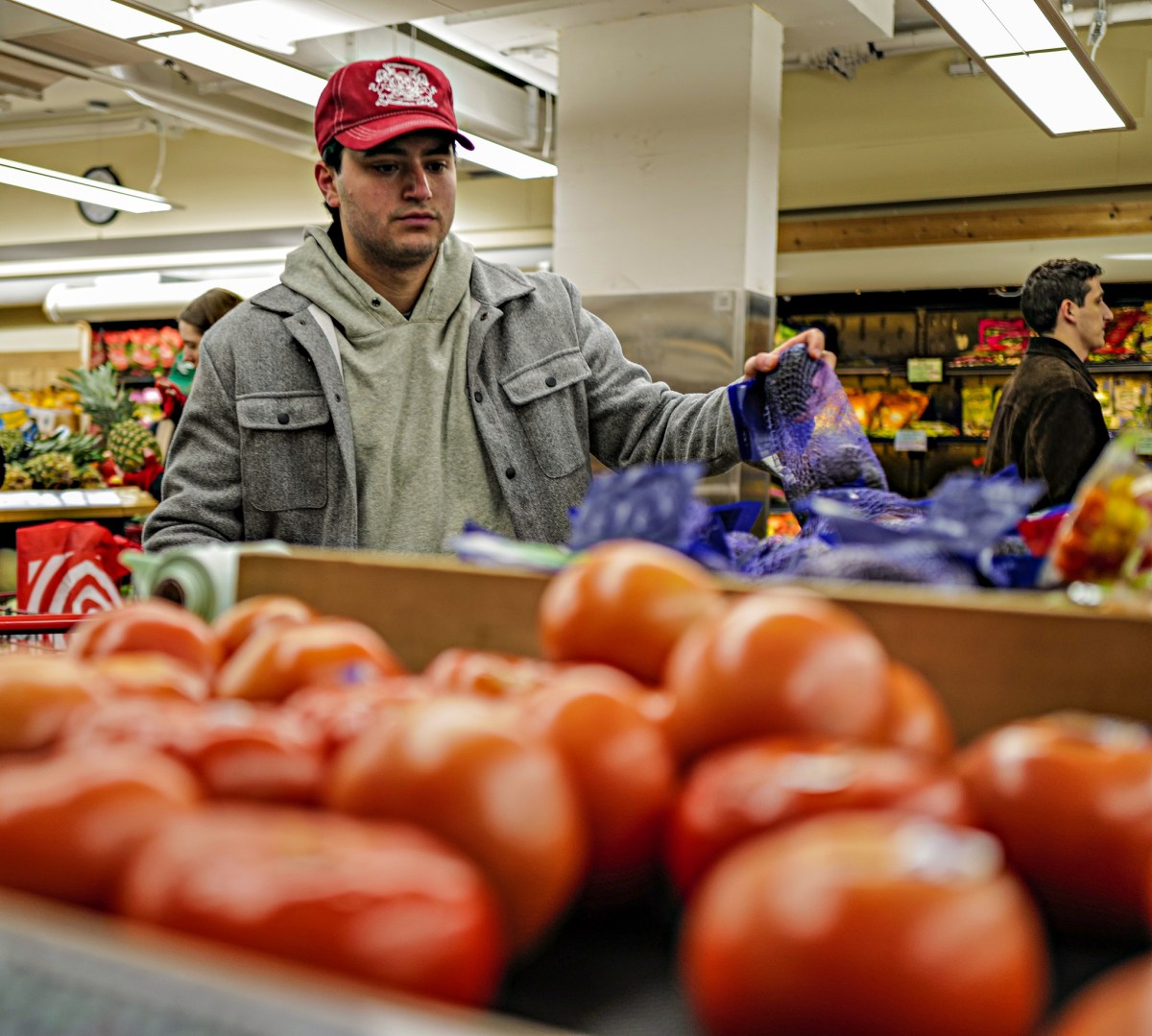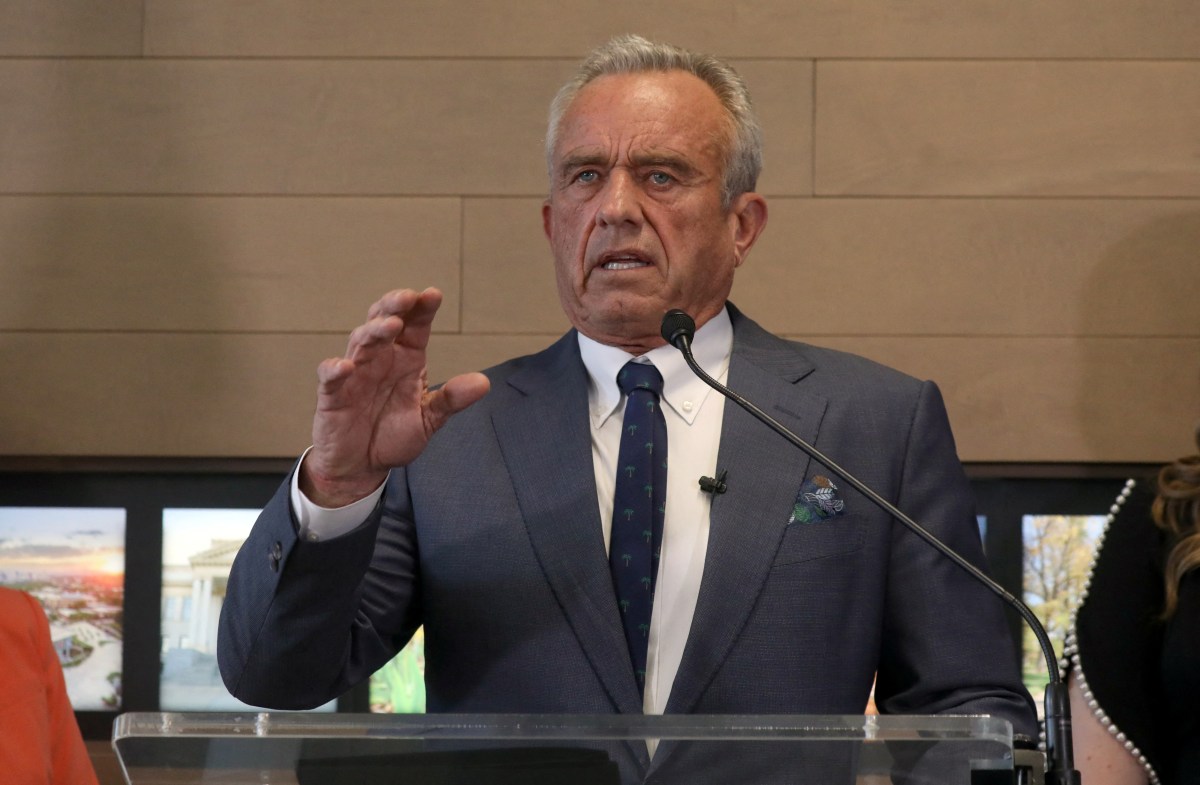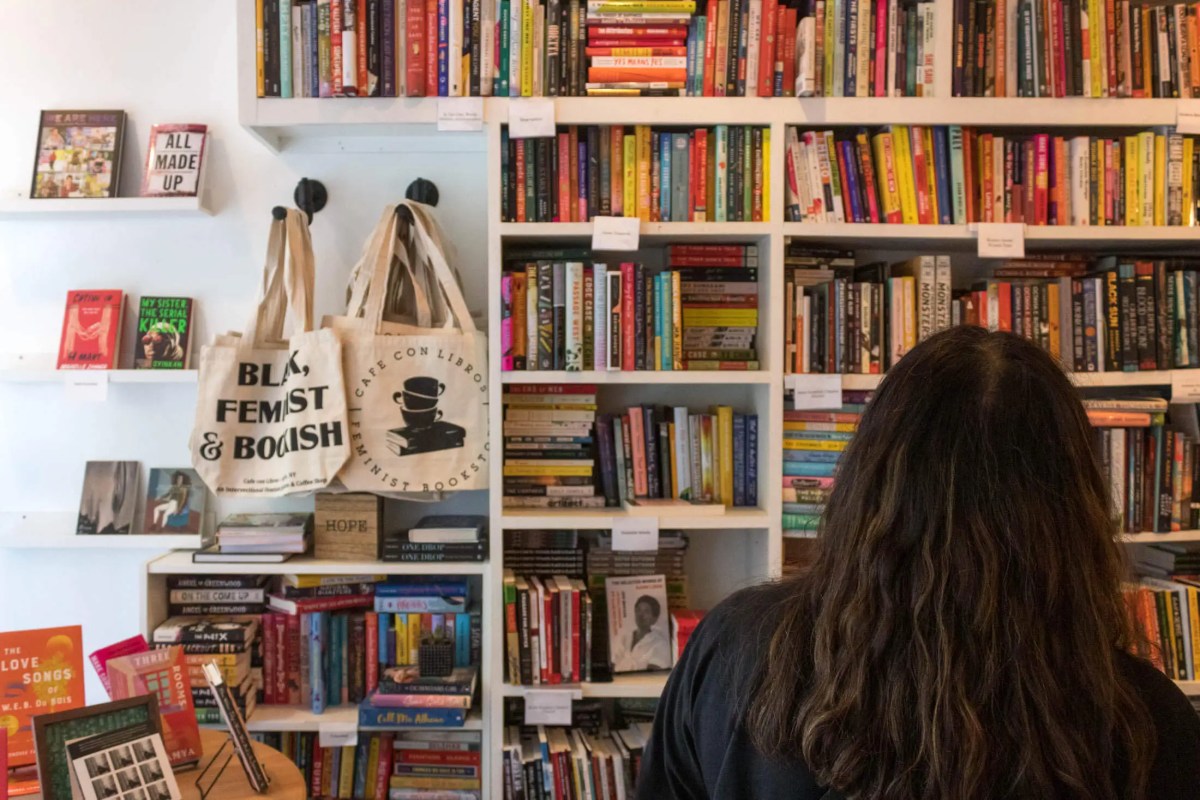Coffee. Chocolate. Even booze. New Yorkers may soon have to pay more — once again — for groceries such as these as the federal government prepares to impose tariffs on a slew of products, including food and beverages.
Food favorites from all over the grocery store could get more expensive, economists warn, after President Donald Trump announced on Wednesday a baseline of 10% taxes on goods imported into the United States.
According to economic forecasts, American customers are soon likely to foot the bill through higher prices to support tariffs imposed on businesses.
“U.S. consumers should be bracing for a dramatic rise in prices, both imported and domestic,” said Mohammad Elahee, professor of International Business at Quinnipiac University. “Most imported food items will be subject to higher tariffs ranging from 10 to 55% or higher, and the importers will pass most of the higher import bill onto the consumers.”
The United States is a major exporter of food items and food supplies. It imports about 20% of all food items consumed by its citizens, totaling about $150-180 billion a year.
You, the consumer, pay for the tariffs
Unlike taxes, tariffs are imposed when an importer brings goods into the country. Basically, any company that imports goods at first pays the tariff at customs.
But once those goods have passed through the ports of entry, you, the consumer, cover the importers’ tariff costs through higher prices for the imported goods you’re buying. When the tariff goes up, so does the price of the items you buy.
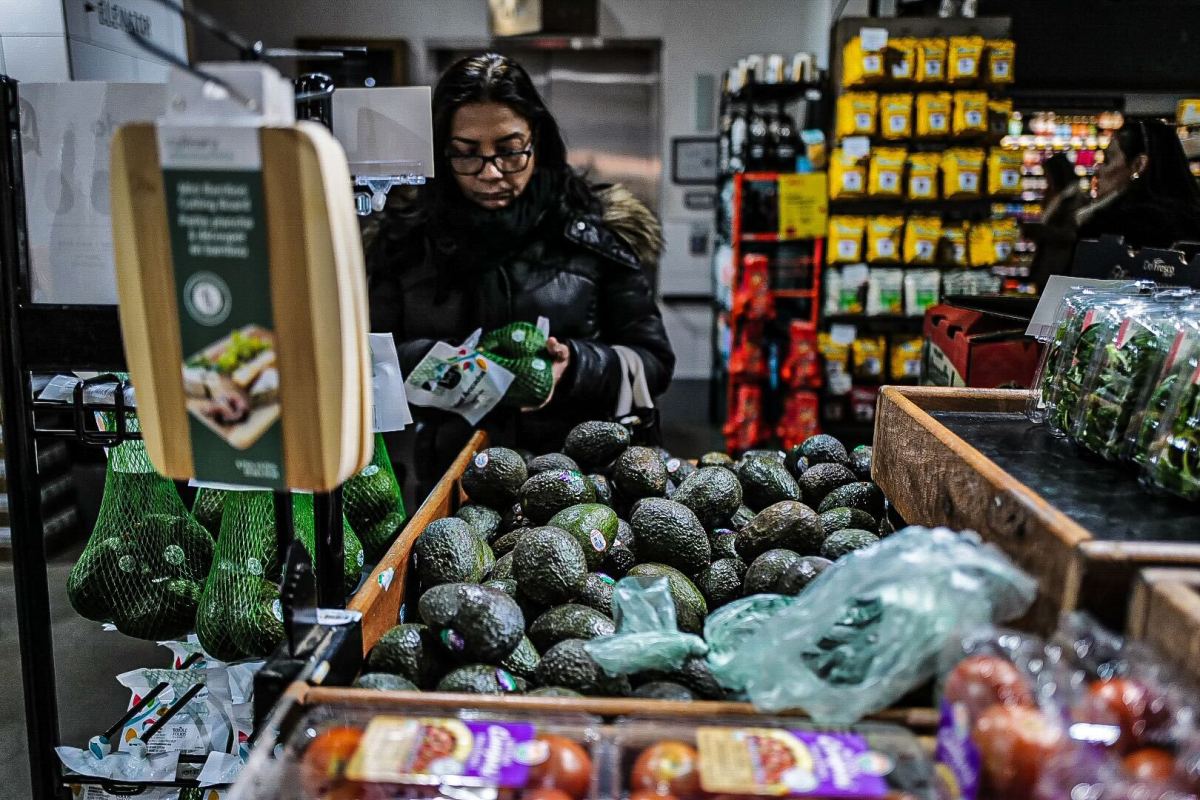
Whiskey, grapes, beef and more
One hope that Trump has is that the tariffs will encourage more homemade items, not just in the realm of food and farming but manufacturing. Due to climate conditions in the United States, the loss of farmland, immigration crackdowns, and many Americans’ unwillingness or inability to work in agriculture, making or growing most food stateside is challenging.
For example, fruits like mangoes grow in tropical climates, not so much in America, though there are exceptions, including Florida and Puerto Rico.
Whisky from the United Kingdom, coffee from Latin America, and beef from Australia would be subject to lower tariffs around 10 to 20%, Elahee explained.
“In addition, to ensure year-round supply, we import many seasonal food items, like tomatoes and grapes, throughout the year,” Elahee said. “The dramatic hike in import tariffs, which includes a 10% universal tariff plus reciprocal tariff on each country, will significantly raise the price of all agricultural produce and food items imported into the United States. “
Other major food imports into the United States include fruits and nuts, milled grain and edible oil, sugar and other sweeteners, vegetables such as avocado, tomato, alcoholic and non-alcoholic beverages, preserved food and vegetables, meat, sea-food, bakery products, dairy products, grains and oil seed.
Higher costs, potential job loss
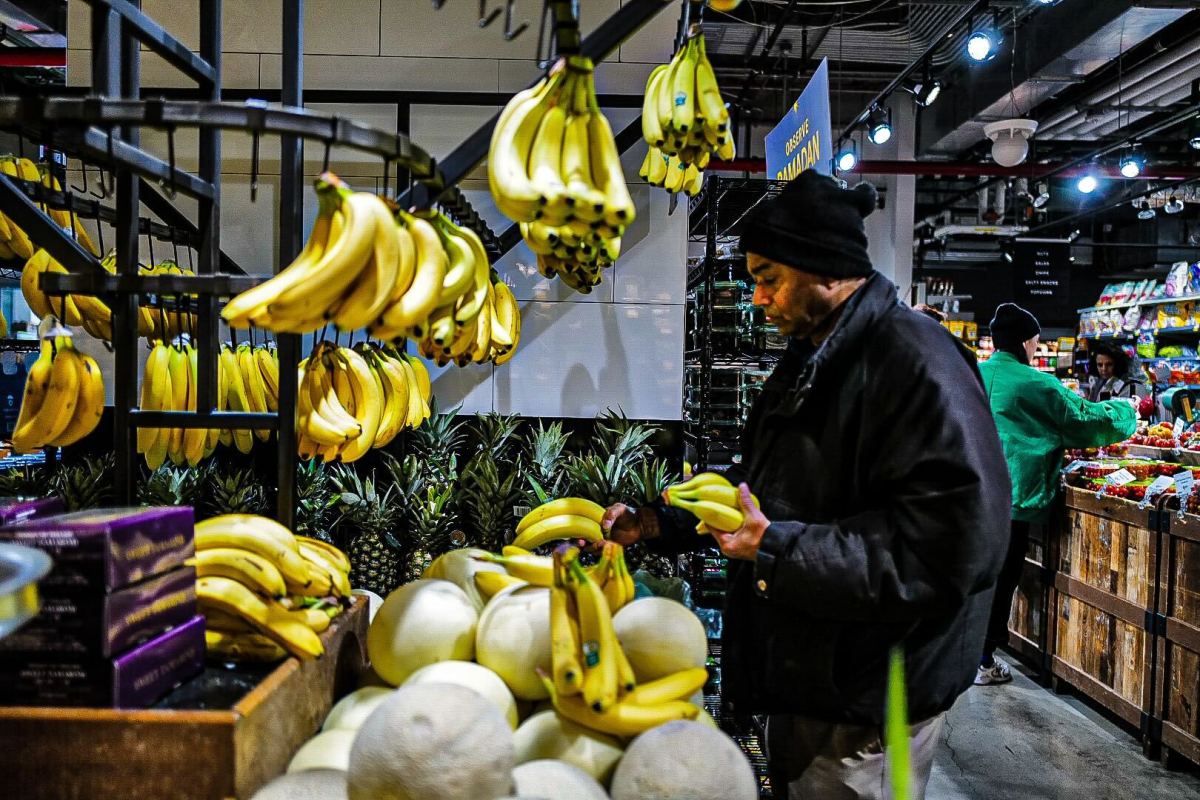
The tariffs are expected to go into effect on April 5. Michel Hernández Valdés-Portela, an adjunct lecturer at CUNY’s Hostos Community College in the Bronx, said there will be other factors to consider in terms of prices, even if tariffs do, in fact, make groceries more expensive.
“There are multiple factors that might affect the final price that consumers will see in a supermarket,” he said.
He said that whether prices will increase after tariffs “depends” on several factors, though it is a strong possibility.
“American consumers might experience an impact in their grocery prices,” Valdés-Portela said. “But whenever we go to the supermarket, we have to consider multiple other aspects that also affect the final market price of what we’re buying.”
Both Elahee and Vales-Portela explained that jobs and the prices of home-grown food will also be affected.
The price of domestically produced food items will also go up as United States agricultural farms suffer from labor shortages, Elahee explained.
“A large proportion of U.S. agricultural workers are undocumented immigrants,” he said. “The deportation of undocumented immigrants is causing further shortage of agricultural laborers, thereby pushing the wage of existing farm workers. Such higher wages will translate into higher prices for agricultural produce and food items that are grown or made in the United States.”
Valdés-Portela said increased prices over time could end up impacting employment in stores.
“It’s not just the consumer, but there will be a destruction of jobs,” he said. “But it depends on how long this goes.”
He spotlighted one popular supermarket as an example.
“Trader Joe’s relies more on workers and paying a good salary, rather than technology,” he said, adding they do not rely much on self checkout. “The problem of tariffs over time, businesses might start to reduce their workers, the number of workers they have in order to cut down on costs.”
Families feel only ‘oppression and pain’
As part of his announcement Wednesday, which the president dubbed “Liberation Day” for the country, Trump doubled down on tariffs and said they have been successful in improving the U.S. economy in the past.
“Studies have repeatedly shown that tariffs can be an effective tool for reducing or eliminating threats that impair U.S. national security and achieving economic and strategic objectives,” a White House memo stated.
The memo also states that “large and persistent annual U.S. goods trade deficits have led to the “hollowing out of our manufacturing base, resulted in a lack of incentive to increase advanced domestic manufacturing capacity, undermined critical supply chains and rendered our defense-industrial base dependent on foreign adversaries.”
But families and Americans across the country are still concerned.
Keri Rodrigues, president of the National Parents Union, a family advocacy group, described the tariffs as “economic suffocation” and said it would push many people toward bankruptcy and other financial catastrophes.
“While the President may see political gain, families across this country will feel only oppression and pain,” she said. “These tariffs will push businesses toward bankruptcy, send shockwaves through retirement savings, and put college dreams further out of reach for millions.”
Fighting food insecurity in NYC
While the White House, trade experts, and politicians across America debate whether or not tariffs should be imposed, New Yorkers continue to struggle with food hunger and food insecurity.
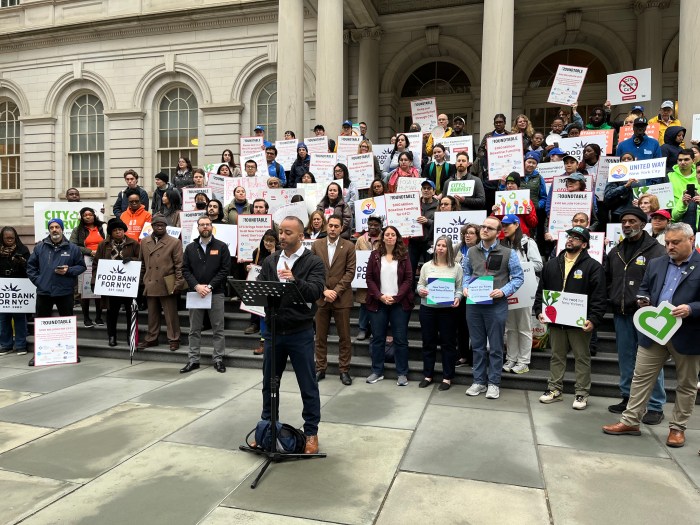
NYC food banks on Thursday reported that over 1 million New Yorkers are suffering from food insecurity and have to rely on emergency food programs to stock their shelves.
To help provide food for New Yorkers in need, food banks are calling on city leaders to allocate $100 million to the Community Food Connection (CFC) program, which provides funding to around 700 community kitchens and pantries around the city.
“We are deeply concerned about the state of food insecurity for our neighbors most in need,” Zac Hall, senior vice president of programs at the Food Bank of New York City, said. “Not having enough food to eat is preventing people from getting to the places they strive to be.”
Despite popular perception, Manhattan City Council Member Chris Marte said that not all people who line up at food banks are homeless.
“The people on those lines are teachers, staff workers, they work at restaurants,” he said. They are the ones who run this city. So if they do not have food on the table, they’re not going to be serving everyone else.
Marte said he and fellow city council members support the $100 million request for food pantries around the city.
Meanwhile, City Harvest workers are planning to distribute more than 83 million pounds of primarily fresh produce this year.
“But we can’t do it alone,” Carlos Rodriguez, chief policy and operations officer of the organization, said.
He added that more funding would offset tariffs and federal cuts to food programs.
“$100 million funding for CFC is what we need when tariffs and federal cuts that are already here continue to impact our families,” Rodriguez said. “What this does is help us hopefully weather the storm that we know is coming in terms of potential cuts that we already see in the affordability crisis.”
Mayor Eric Adams said he would be “carefully monitoring” developments surrounding the tariffs.
“The Adams administration has been on the forefront of making everyday life more affordable for New Yorkers by eliminating or cutting city taxes for 582,000 households, reducing the cost of child care from $55 to $5 a week, creating records amount of affordable housing, and much more since day one,” a spokesperson for the mayor said. “The new tariffs are a very recent development that we will carefully monitor. If there are impacts, it will be reflected in the city budget in our revenue forecast updates.”
The city will be updating its revenue forecast in the upcoming executive budget on May 1. The final city budget is due June 30.
For a list of food pantries by borough, visit nyc.gov.



